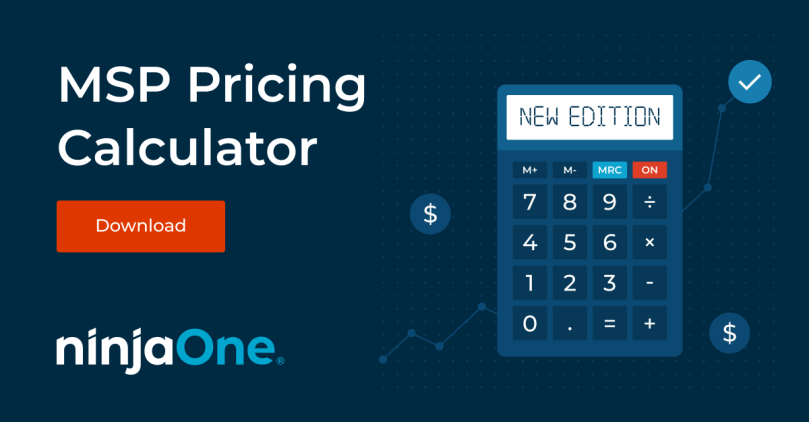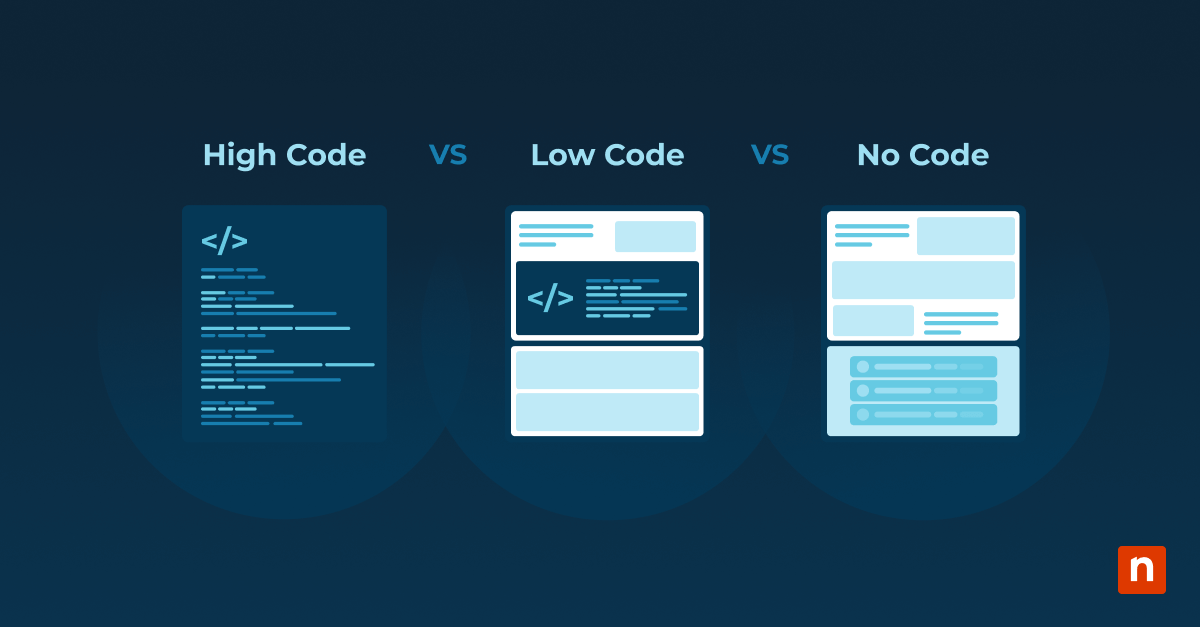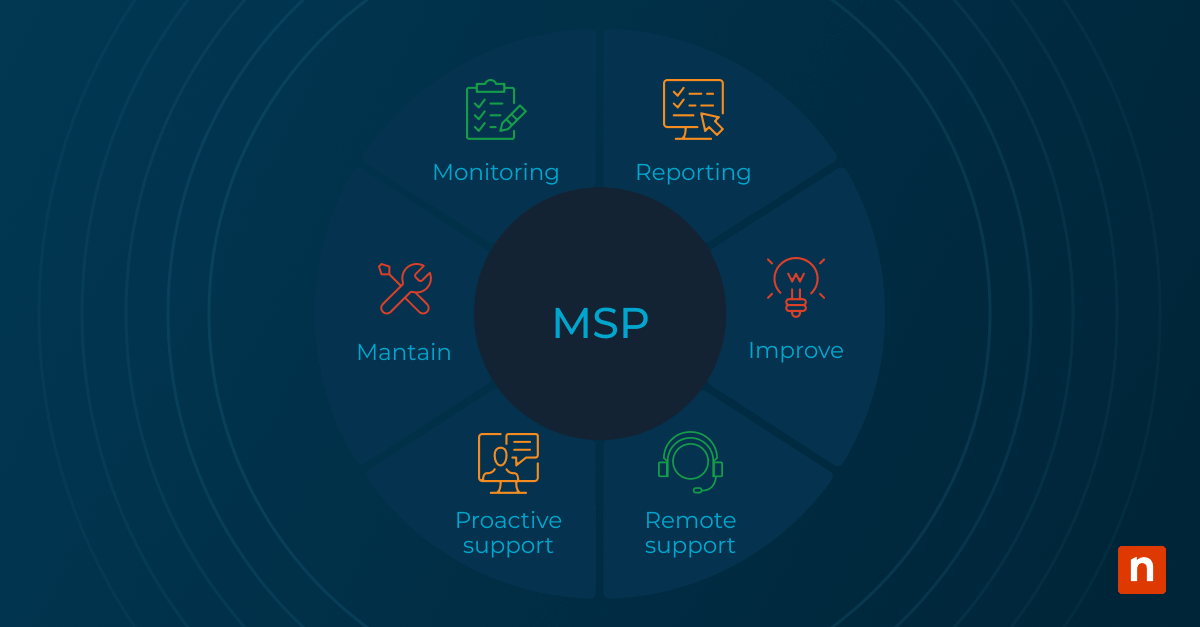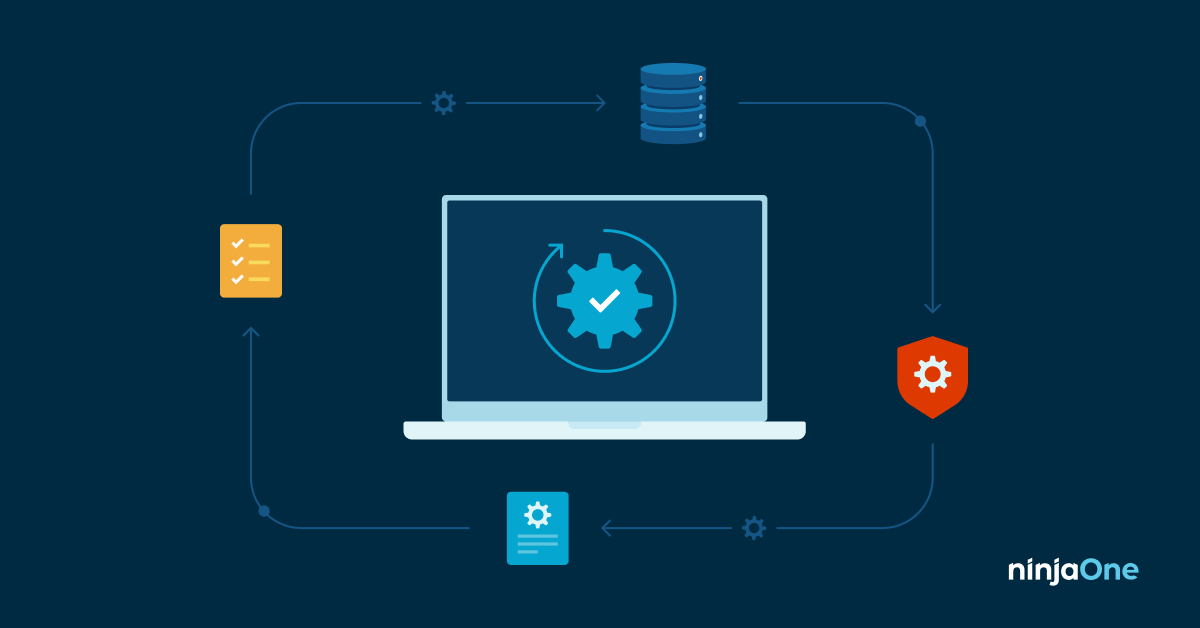When you’re operating heads-down on your business, it can be easy to get caught up in the grind and lose sight of whether you’re focusing on the top things that truly matter. Tracking the right metrics can help keep you focused and alert you to what needs calibrating and how urgently. There’s no lack of possible metrics and KPIs (Brightgauge shares 70 here), but to help you stay focused, let’s step back and review the top 20 critical business metrics for MSPs.
Profitability metrics
High-level financial health indicators and valuation drivers
Let’s start off by looking at what investors and financial advisors focus on when they valuate MSPs. If you want to know that your business is healthy and performing well, you should first look at your profitability metrics.
1) EBITDA margin
EBITDA is the net income (or earnings) with interest, taxes, depreciation, and amortization added back. This metric is important because revenue alone doesn’t measure the value of an MSP; profitability is what really matters.
The EBITDA margin is calculated by dividing the EBITDA by your total revenue, and the target should be about 15-20% of your gross annual revenue.
2) Revenue growth rate
The revenue growth rate is a metric that shows the increase in how much money your company makes. A high revenue growth rate will show that you have more money to invest in your organization as a whole and that your business is on an upward trajectory.
Calculate your revenue growth rate by subtracting the previous year’s revenue from the current year’s revenue and dividing that by the previous year’s revenue. The outcome should be a percentage, aiming for at least 10% year-over-year.
3) Percent of revenue from MRR
Your monthly recurring revenue (MRR) is the revenue that’s generated by your business due to recurring payments. For an MSP, that’s through contracts and managed service agreements. Investors love that because it lowers risk and makes it more predictable. Businesses that have more MRR are worth a LOT more because the revenue will continue in the future.
You can calculate your percent of revenue from MRR by dividing the MRR revenue by the total revenue. Your target should be 80% or more.
4) Customer retention rate
Successful businesses don’t just acquire new customers; they are able to keep existing ones. It’s always cheaper to keep your current customers than acquire new ones, and investors want to see that you have high customer retention. An even loftier goal would be to achieve negative churn, which is when the lost revenue from churn is less than the expansions or upsells from your current customers.
Calculate customer retention by dividing the number of customers in a year by the total number of customers the previous year. Aim to retain 90% or more of your customers year-over-year.
5) Client concentration
Your client concentration should be spread out and diversified so that your entire business doesn’t rest on the fate of one or a few customers. It’s important for you to work yourself out of “too-many-eggs-in-one-basket” scenarios, where losing any one customer (or vertical) would be fatal to your business.
This metric is calculated by taking the revenue earned from a customer(s) in a year and dividing it by the total yearly revenue. No single customer should account for more than 25% of your revenue, and no five customers should account for more than 50% of your revenue.
6) Employee retention
Employee retention greatly affects business productivity and growth. Consequently, investors want to see that you’re not losing people in your business internally. Monitoring your employee retention and churn rate can help you identify areas for improvement within your company.
First, figure out your average number of employees by adding the active employees at the beginning of a period and the active employees at the end of a period, then divide by 2. After that, you can calculate the employee churn rate by dividing the number of employees who left during a period by the average number of employees and multiplying by 100. Your target should be complete employee retention or 0% churn.
Identifying your most profitable (and problem) clients
7) Customer lifetime value (LTV)
Customer lifetime value (LTV) is how much a customer generates for you. You can also group and break your customers up into cohorts or classes to determine which groups generate the most lifetime value for your business. In addition to helping you identify your best clients, LTV can help you determine how much you can afford to spend on sales and marketing to maintain a healthy CAC ratio and ROI.
Customer lifetime value is calculated by taking the total revenue from a customer and subtracting the cost of acquisition.
8) Cost & revenue per end user supported
The cost and revenue per end user measure how much you make per seat. This shows how profitable a certain agreement will be if you base the cost on the number of end users supported. Comparing this metric with the cost and revenue per endpoint supported allows you to determine whether or not you need to raise your prices.
Our MSP pricing calculator allows you to automatically calculate both the cost and revenue per end user.
9) Cost & revenue per endpoint supported
The cost and revenue per endpoint supported track how much you make per device. Depending on the client you are providing services for, there could be situations where you’d rather attract a certain cost per endpoint.
Again, our MSP pricing calculator can help you calculate this metric to help you determine profitability.
Note: It’s worth tracking both users and endpoints just to see if there are any anomalies.
Ensuring you’re operating efficiently and you have the right number of staff
10) Technician hourly cost
Labor is a big part of the total costs for an MSP, so you’ll want to know how much your technicians are costing you per hour.
If technicians are paid hourly, then the hourly cost is equivalent to their hourly rate. If they are salaried, calculate how many hours they work per week and divide their annual pay by 52. Then, divide their weekly pay by the number of hours worked per week to determine the technician’s hourly cost.
11) Utilization rate
Utilization is a metric used to help you determine if you have the right-sized staff. It is a measurement of the productivity of your employees that shows how efficiently they’re working with the resources they’ve been provided.
The utilization rate is calculated by taking the number of hours spent on client work and dividing it by the total hours worked.
Sales and marketing metrics
12) Customer acquisition cost (CAC)
Customer acquisition cost (CAC) measures the amount of money spent to acquire a client. This includes the sales and marketing expenses needed to convert a lead into a customer. You’ll want to ensure that you’re not overspending to gain new business.
CAC is calculated by adding your sales and marketing costs and dividing that sum by the number of customers acquired. It should be no more than one-third of your LTV, meaning you should be earning at least three times what you pay to acquire any given client.
13) Qualified lead velocity rate
Your qualified lead velocity rate is the growth percentage of qualified leads that are generated month over month. This is a metric that measures your pipeline development in real time and is a good indicator of sales revenue.
You can calculate your qualified lead velocity rate by subtracting the qualified leads last month from your qualified leads this month and dividing that result by the qualified leads last month. Multiply it by 100 to get the lead velocity rate percentage.
14) Cost per lead
Cost per lead is the amount of money required to generate a new lead for your business. It is a very simple metric, but it is worth tracking because it helps you determine how effective your marketing and lead generation efforts are.
Calculate cost per lead by dividing the total amount spent on marketing efforts for lead generation by the total number of new leads.
15) Conversion rates
There will be multiple steps in your sales funnel. It’s important to measure conversion rates between each one. Conversion rates allow you to see where there might be an issue in the pipeline.
Here’s an example of the steps in a sales funnel:
- Lead → Qualified lead
- Qualified lead → Opportunity
- Opportunity → Closed deal
The conversion rate is calculated by dividing your total sales by the number of leads and multiplying it by 100.
Service metrics
16) SLA adherence
Service level agreement (SLA) adherence is a measure of the rate of customer incidents that are resolved within the agreed-upon SLA parameters. This shows how successful you are at providing services within the contract parameters, and ensures you are accountable.
Divide the total number of resolved incidents that are within SLA parameters by the total number of incidents to calculate SLA adherence.
17) Tickets opened vs. tickets closed
This is a simple comparison between two key metrics. Any time a ticket is opened, an issue needs to be resolved or a service needs to be provided. As an MSP, your goal is to close more tickets than your client opens in a given period, which results in a smaller backlog of service requests.
Simply count the number of open tickets and closed tickets in a given period, then compare the two numbers. Aim to have more closed than open tickets.
18) Average time to response
Average time to response measures how quickly, after you receive a ticket, you begin working on the request. Customers want to see a short response time so they know you’re reliable and that you’re actively working to resolve their issue.
Measure the length of time it takes for your technicians to respond after initially receiving a ticket. Calculate the average by adding all these measurements and dividing by the number of responses.
19) Average time to resolution
Average time to resolution tracks how long it takes you to resolve a ticket. The faster you resolve a ticket, the happier your end users and customers will be.
Track the length of time between when your technicians first receive a ticket and the resolution of the issue. Calculate the average by adding all resolution times together and dividing by the number of resolved tickets.
20) CSAT
Your customer satisfaction score (CSAT) is an indicator of how satisfied your customers are. It’s important to measure this so you can determine whether your clients are actually happy with your services. Clients give you a score between 1 (very unsatisfied) and 5 (very satisfied) to rate the services they received.
CSAT is calculated by adding the total number of satisfied customers (rated you 4 or 5) and dividing it by the total number of survey responses.
The importance of tracking MSP business metrics
Running an MSP business is no small task, but tracking important business metrics gives you knowledge of how your business is actually performing. There’s plenty of other data you can observe; these are just the top twenty metrics you should be monitoring. Tracking these metrics will help you to objectively look at your business operations and make effective changes that can improve your company.
Check out our MSP pricing calculator to help you calculate many of these metrics, their costs, and total revenue for your MSP business.









